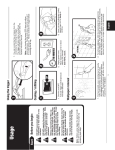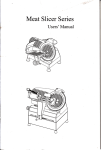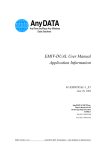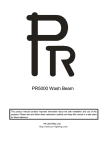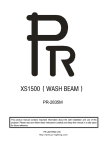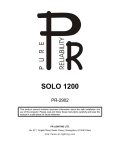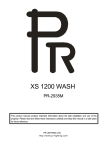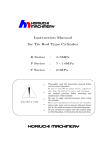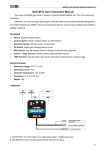Download screen printer user manual
Transcript
User Manual S-1/S-2/S-3 Manual Curved Surface Screen Printing Machines This machine manual, and cheap, low noise, reliable, and individual households and small businesses, is the best option. Main Parameters: Model S-1 S-2 S-3 D-1 D-2 Max Frame(mm) 320*210 320*370 460*370 460*560 560*750 Max Dia. (mm) φ60 φ160 φ160 φ300 φ400 Max circumference(mm) 200 200 300 300 500 Max Size (mm) 200*100 200*240 300*240 300*400 500*400 Dimensions(L*W*H): 680*310*220 680*480*350 830*480*350 1000*660*350 1320*680*620 A 14 13 15 16 18 19 20 21 B 17 18 19 20 21 12 11 10 1 2 3 4 5 22 9 6 7 8 1、.workpiece ;2、localizer;3、axletree;4、underprop for work piece ;5、diamonds 6、underprop for (22) bracket; 7、underprop for work piece; 8、adjust screw 9、pedestal ;10、Frame;11、inner bracket;12、locknut for frame; 13、hand place; 14、aperture; 15、squeegee carrier;16、clamps of the squeegee/Ink 17、18: ink reclaiming blade; 19、locknut 20、bolt ,for up and down; 21、bolt,for (17) Demonstration Manual cylinderical(or curved)screen printing machine Manual cylinderical(or curved)screen printer is a manual operated machine. With the characters of cost-less, light weight, and high quality, it is an economical and the best option for individual households and small businesses. Structure analysis picture (second page). First picture depicts the state of printing. Second picture depicts the state of raising the frame and reclaiming the ink after printing. Part 1: Work piece Part 2: Localizer Part 3: 4 Axletrees Part 4: Underprop for work piece Part 5: 8removable diamonds connecting with the cylindrical item. They can be regulated according to the size of the cylindrical item or Circular cone. Part 6: Height regulating screw which can regulate the height of the outside frame Part 7: Underprop for work piece (the angle can be regulated) , which can be regulated by Part 8. Part 8: 2 adjust screws Part 9: Pedestal Part 10 : Frame Part 11: Inner bracket, which is fixed on the frame. Printing can go on through forward and backward moving of the track. Part 12: Board pressing locknut which can fix the frame and inner bracket Part 13: Handle Part 14: Regulating slots and screws which can regulate the printing distance according the work piece Part 15: Squeegee carrier,squeegee should be fixed Part 16: Screw and handle which can regulate the up and down of squeegee carrier Part17, 18: Ink reclaiming parts (part17: aluminum board for reclaiming ink, whose position and angle can be regulated by the slot) Part 21: Screw which can regulate the height of ink reclaiming board Part 22: Bracket Part 19, 20: Screw which can regulate the up and down of the bracket to get the height you want. When the regulation is finished, fix the locknut tightly to ensure the stable of printing process. Manual Operating Steps: 1. Put the cylindrical work piece on the 4 axletrees (part3), regulate 8 removable diamonds (part5) and make proper distance between 2 underprops (part4) for work piece. Make sure the work piece can rotate smoothly. 2. Install the frame (part10) on the machine and fix the board pressing locknuts (part12). Regulate the height of bracket (part22) to make the inner bracket 1mm above the work piece or just in touch with the surface of the work piece. Then regulate height regulating screw (part 6). 3. Regulate squeegee carrier(part15). Make sure the edge of the squeegee carrier, surface of the frame (part10), and the surface of cylindrical work piece are in parallel lines. And make sure the edge of squeegee carrier (part15) is in touch with the printing cylindrical work piece. Then, fix the screw of part16. 4. Regulate aluminum board for reclaiming ink (part17) and try to printing. Printing processes includes two mainly procedures: l Ink reclaiming procedure: use the handle to raise the bracket (part22) up and push forward l Printing procedure: put down the bracket (part22), and use handle to pull inner bracket (part11) towards your body. My distinguished customers: Manual cylinderical(or curved)screen printer regulation before using is a relative complex process. It needs patience, and accurate operation. You can work smoothly only when all the parts are in their positions.




